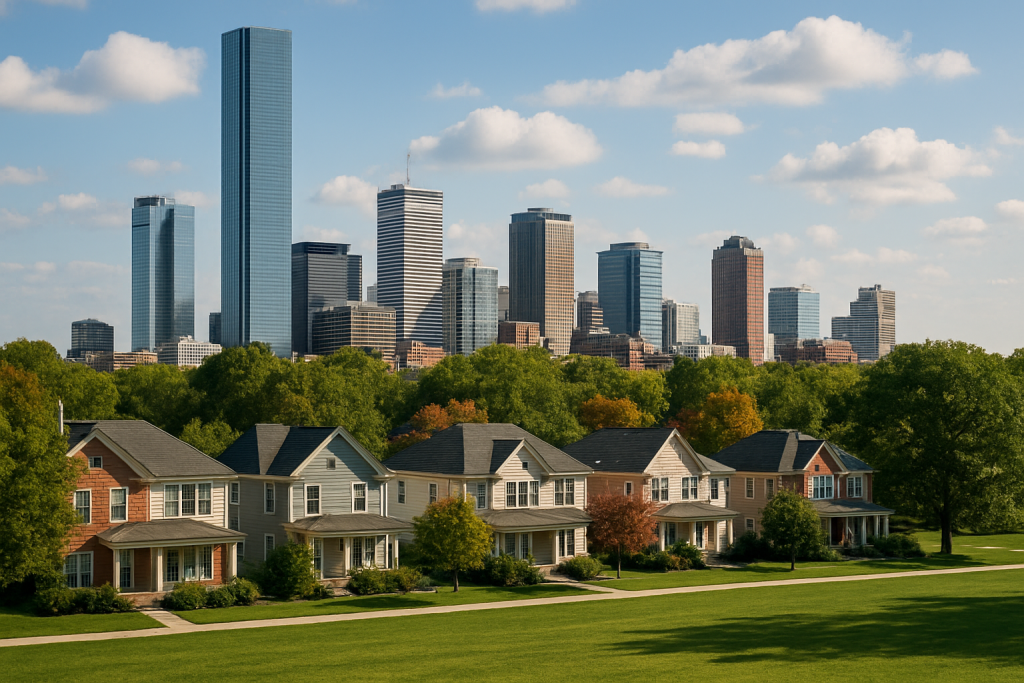The real estate market in the United States is navigating unprecedented post-pandemic challenges. As urban and suburban areas adapt to new realities, both opportunities and hurdles arise. The pandemic has reshaped how people view their living spaces, affecting demand across various regions. Understanding these changes is crucial for investors, buyers, and real estate professionals alike.
Urban areas, once bustling with buyers and renters, now face distinct pressures. Meanwhile, suburban regions experience shifts in population dynamics and infrastructure needs. Addressing these challenges requires insights into emerging trends, as well as strategic responses to evolving demands. This article explores how the real estate market is adapting in this transitional period.
Changing real estate market dynamics in urban areas

In the wake of the pandemic, urban real estate markets confront unique challenges. Cities, historically vibrant and densely populated, experienced notable shifts. Remote work trends led to decreased demand for urban office spaces, impacting commercial real estate significantly. Simultaneously, residential markets in cities face fluctuating interest due to changing lifestyle preferences.
As cities adapt, it is crucial to re-evaluate urban infrastructure and amenities to meet evolving demands. Real estate market stakeholders must consider sustainable development and green spaces to attract long-term residents. Urban renewal efforts, focusing on livability, could revitalize interest in city living, positioning urban areas for a hopeful resurgence.
Strategies for urban revitalization
To combat these challenges, urban areas could implement various strategies. Enhancing public transportation and creating multi-use spaces are essential for attracting residents back. Additionally, cities could incentivize businesses to return, balancing remote work with in-person collaboration.
Furthermore, integrating technology with property management could increase an urban dwelling’s attractiveness. These measures may not only stabilize the real estate market but also nurture growth and innovation within urban landscapes, paving the way for future success.
Suburban growth and its impacts
The suburban real estate markets witness a surge in demand, presenting both opportunities and challenges. As people sought more space during the pandemic, suburbs offered a reprieve from congested urban centers. However, this swell in popularity requires efficient management of resources and infrastructure.
Understanding these shifting dynamics is crucial for stakeholders in suburban regions. Balancing expansion with community preservation can be challenging. Adaptation is essential to maintaining livability while accommodating increased populations. Exploring sustainable growth strategies can ensure long-term success for burgeoning suburban locales.
Practical approaches for sustainable suburban development
For sustainable suburban growth, focusing on infrastructure enhancements such as roads, schools, and healthcare facilities is paramount. Implementing smart growth principles, which prioritize mixed-use communities and environmental conservation, can aid in managing suburban expansion.
Additionally, fostering a sense of community through local engagement and social programs can bolster suburban appeal. These efforts will likely lead to a more resilient suburban real estate market, poised to thrive as individuals continue seeking balanced lifestyles away from urban centers.
Conclusion on the evolving real estate landscape
The post-pandemic period presents unique challenges for the US real estate market, with divergent trends in urban and suburban areas. As cities work towards revitalizing their appeal with sustainable development practices, suburban regions handle the pressures of growing interest and demand.
Ultimately, strategic planning and innovation will determine success in these evolving landscapes. By embracing change, enhancing infrastructure, and focusing on community needs, both urban and suburban real estate markets can find pathways to thriving in a post-pandemic world. For stakeholders, understanding these dynamics is essential to navigating and capitalizing on the evolving real estate market.
